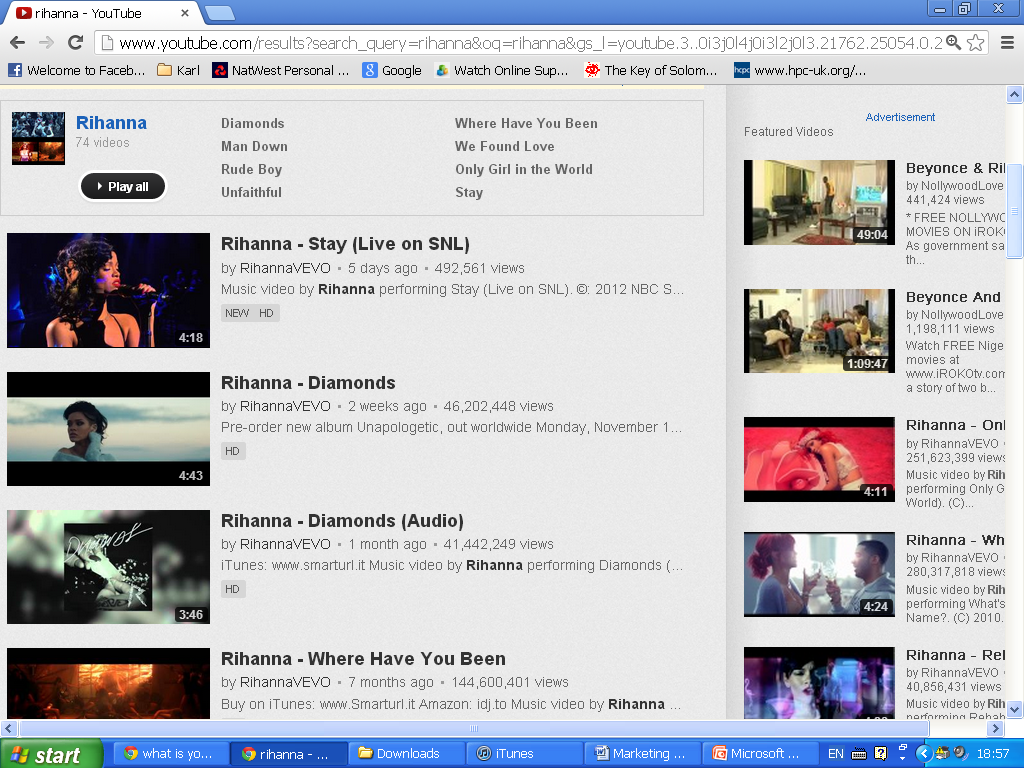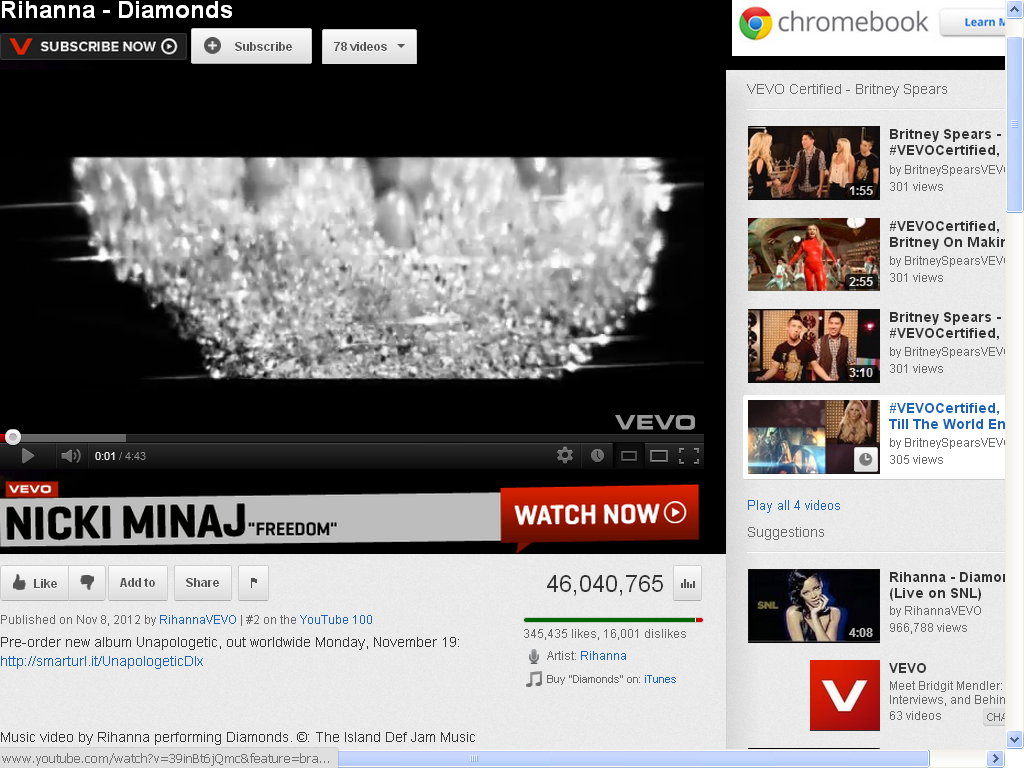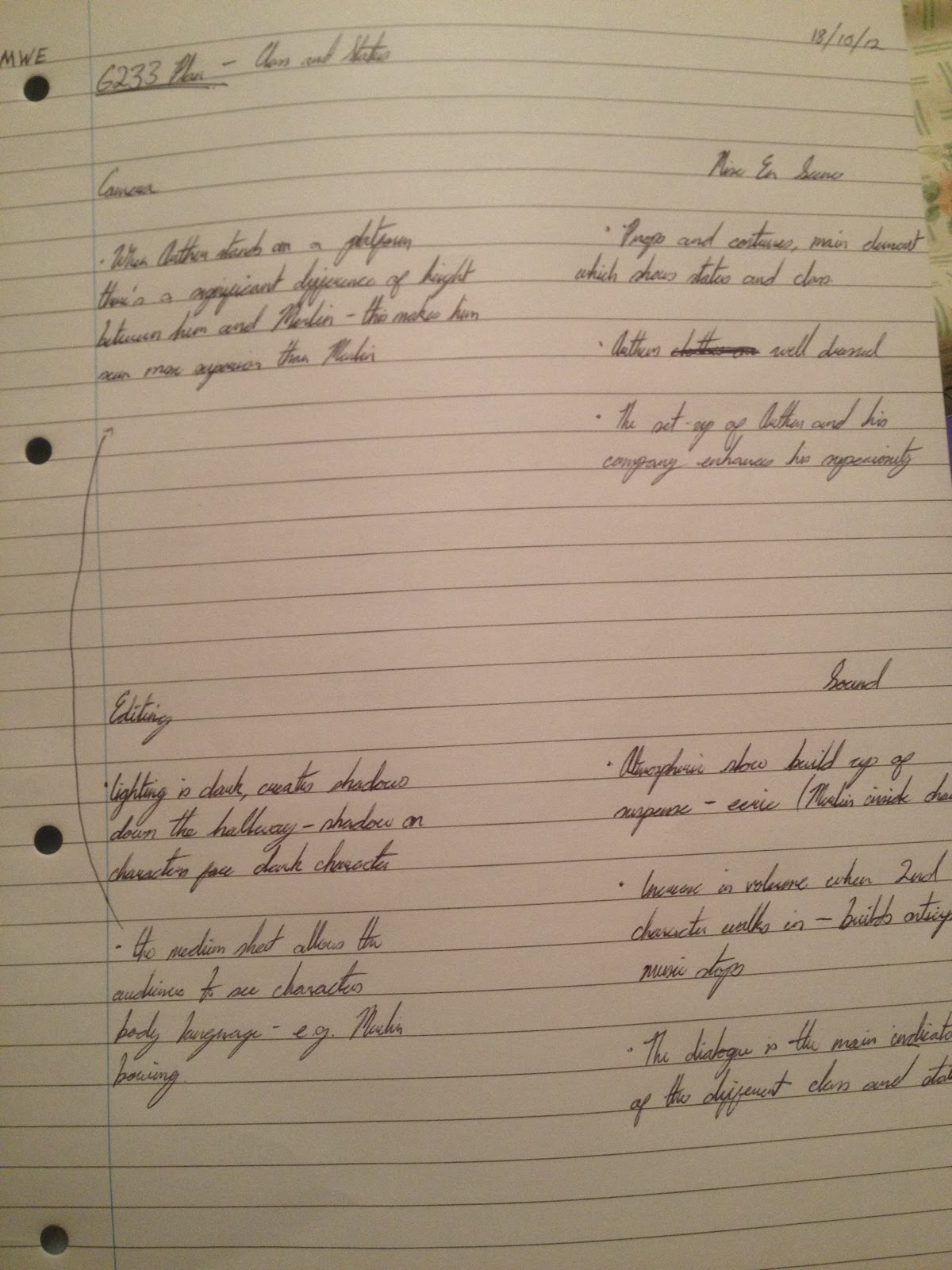Case Study on Marketing and Distribution
Study on Marketing and Distribution technique by contemporary artist, Rihanna.
MWE
23/12/12
23/12/12
Marketing and Distribution- Rihanna
The internet had taken the marketing and distribution of
music to a whole new level. It has seized every single part of the globe and had
become a powerful tool for the music industry to market their product and
promote their artists. This can be seen clearer when analysing big record label
companies and their marketing strategies. An example of a multinational record
label company would be “DefJam” which is subsidiary to Universal Music Group,
this is where song artist Rihanna is signed. Although, RIhanna is not just an
ordinary artist as she is one of the most iconic musician, a key figure in
mainstream music. This makes her DefJam’s priciest musician, taking in the highest
income to the company. Her popularity amongst the public is a key element to
selling her products, having great fan base across countries. Considering that
Def Jam is a multinational industry, they have the money to spend on
advertising their products and artists and still make huge profit. Record label
companies use vast selection of social media platforms, one of the most well
known example would be “YouTube”, a video- sharing website. It is used
universally and so millions of people have access to this website, it is
commonly used to listen to music. This had been used by record label companies
to their advantage.
 The screenshot above shows a typical YouTube page after
typing a key phrase on the search bar, the website will then look for videos
which are relevant to the typed word. In this case, I’ve typed “Rihanna” and
immediately the website shows music videos by the artist. If you look
carefully, all of the following videos have been uploaded by “RihannaVEVO”.
VEVO is a music video website where the 4 leading major record labels (Sony
Music Entertainment, Warner Music Group, Universal Music Group and EMI) share
music videos of their artists single to advertise them.
The screenshot above shows a typical YouTube page after
typing a key phrase on the search bar, the website will then look for videos
which are relevant to the typed word. In this case, I’ve typed “Rihanna” and
immediately the website shows music videos by the artist. If you look
carefully, all of the following videos have been uploaded by “RihannaVEVO”.
VEVO is a music video website where the 4 leading major record labels (Sony
Music Entertainment, Warner Music Group, Universal Music Group and EMI) share
music videos of their artists single to advertise them.  This is a video page; observing the YouTube page, all of its
functions have been thoroughly used to promote the artist and their songs. In
the information box, a web link is presented where people can pre-order the
upcoming album of the artist, advertising the album heavily. It is constantly
encouraging its audience to purchase the product. Beneath the “like button” two
links are present: “Rihanna” leads to Rihanna’s VEVO channel on YouTube where
many more of her songs can be found and the user has the option to subscribe to
her channel. By subscribing, they are promptly updated about the artist’s
latest future debut. “iTunes” is a link which takes the user to iTunes website,
another social media platform specializing in music and digitally converged
with apple.
This is a video page; observing the YouTube page, all of its
functions have been thoroughly used to promote the artist and their songs. In
the information box, a web link is presented where people can pre-order the
upcoming album of the artist, advertising the album heavily. It is constantly
encouraging its audience to purchase the product. Beneath the “like button” two
links are present: “Rihanna” leads to Rihanna’s VEVO channel on YouTube where
many more of her songs can be found and the user has the option to subscribe to
her channel. By subscribing, they are promptly updated about the artist’s
latest future debut. “iTunes” is a link which takes the user to iTunes website,
another social media platform specializing in music and digitally converged
with apple.
iTunes is another social media platform created by Apple, it
has its own store where music and videos can be purchased to be used on Apple
devices, e.g. iPods, iPhones etc. which are gadgets commonly owned by many. iTunes
had completely changed the way we listen to music, becoming the main avenue of
sales for record label companies. iTunes enables its clients to purchase music
online and advertise its partners products. It has become a key element for
record labels companies marketing and distribution. iTunes had developed over
the years, enhancing its function which also helped to market products of several
artists. Its features such as: “iTunes Match” and “Genius” have helped increase
sales and popularity of artists. Genius provides songs which are of similar
genre as the recently bought song on iTunes store, or songs which had been done
by the same artist. iTunes provides offers to its consumers to encourage them
to buy more products.
Small record label companies would not be able to spend as
great amount of money advertising their artists unlike elite record label
companies who have formed partnership with other companies to increase the
company’s sales. Big record label companies also gives freebies which can be
picked up from stores. The image below is an example. The card provides free
download of one of the artist’s song on iTunes. The marketing doesn’t stop
there as clothes had been designed based upon an artist’s single. Which again
is encouraging consumers to purchase the artists album?
In conclusion, as consumers we are constantly being
bombarded by suggestive messages to buy products whether it’s from TV adverts,
freebies, advertisement banner online etc. Due to the wealth multinational
record label companies possess, they have the ability to spend great amount on
marketing their products globally.





















.jpg)

.jpg)
.jpg)


















